✨You Can Touch the Times Square New Year's Eve Ball!
Find out how you can take home a piece of the old New Year's Eve ball!


Carroll Gardens is a neighborhood in northwestern Brooklyn just north of Red Hook and west of Gowanus. The area, originally considered a part of South Brooklyn, was settled by Irish and Norwegian immigrants but over time developed into an Italian and French enclave. The community is famed for its brownstones with tons of greenery, high-quality and long-standing restaurants, ornate churches, including St. Paul’s Episcopal Church and the South Congregational Church, and historic streets. Here are ten secrets of Carroll Gardens!
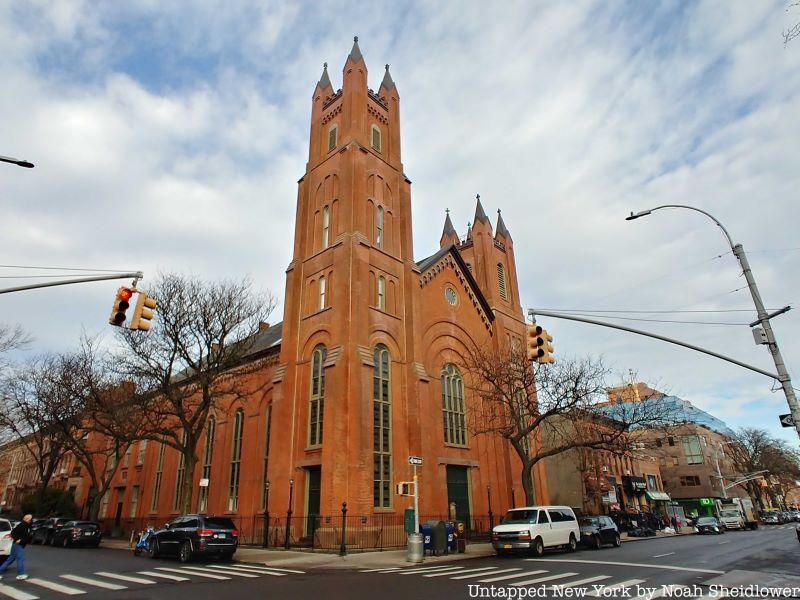
The name Carroll Gardens (and Carroll Park) comes from Charles Carroll of Maryland, the only Catholic signer of the Declaration of Independence. During the Revolutionary War, Carroll led a regiment of 400 men that tried to regain a farmhouse on the Gowanus Creek from the British. About 300 were killed in the attacks, but the neighborhood was named in honor of him and his troops in 1853 for their patriotic acts. It is likely, though, that Carroll never stepped foot in what would become Carroll Gardens.
Carroll was also the last surviving person to sign the Declaration of Independence, passing away in 1832. He served as the first U.S. Senator from Maryland, and he was often considered the wealthiest and most educated of the signers. His personal fortune amounted to about $375 million today, and he lived on a 10,000-acre estate that included about 300 enslaved people.
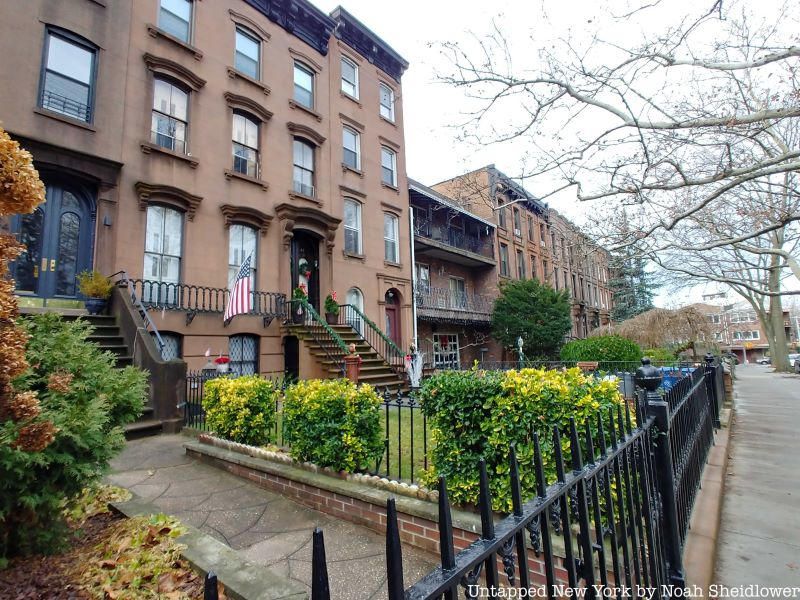
The “gardens” of the name comes from the large front gardens of the neighborhood’s brownstones, especially within the Carroll Gardens Historic District. The district consists of 134 residential rowhouses built between the 1860s and 1880s, many two or three stories tall. The buildings are mainly in the Neo-Grec and late Italianate styles, all with fenced front yards and landscaped gardens. The homes are also set farther back from the street than those of most Brooklyn neighborhoods.
Surveyor Richard Butt planned gardens in front of the brownstone homes when developing the neighborhood in 1846. There was actually a law passed that required buildings between Henry Street and Smith Street to have 33 feet and 5.25 inches between the building and the street for “courtyards.” Many newer brownstones built in the late 1800s came about following the draining of swampland around the Gowanus Creek to build the Gowanus Canal.
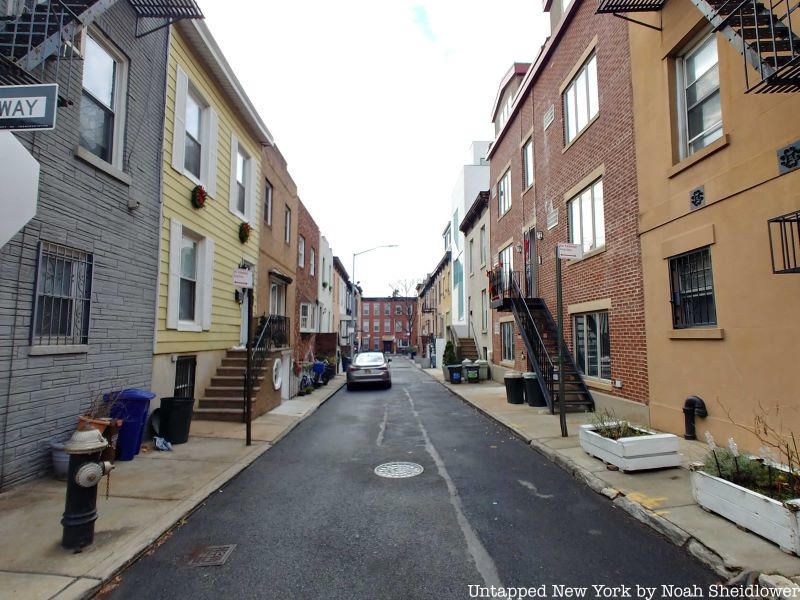
Dennett Place is one of the more obscure streets in Brooklyn, a one-block street in Carroll Gardens with some unique traits. For one, many homes have miniature street-level entrances which lead into basements, kitchens, or bedrooms despite being much shorter than most people. The street’s name is odd to many residents since nobody can explain who Dennett is.
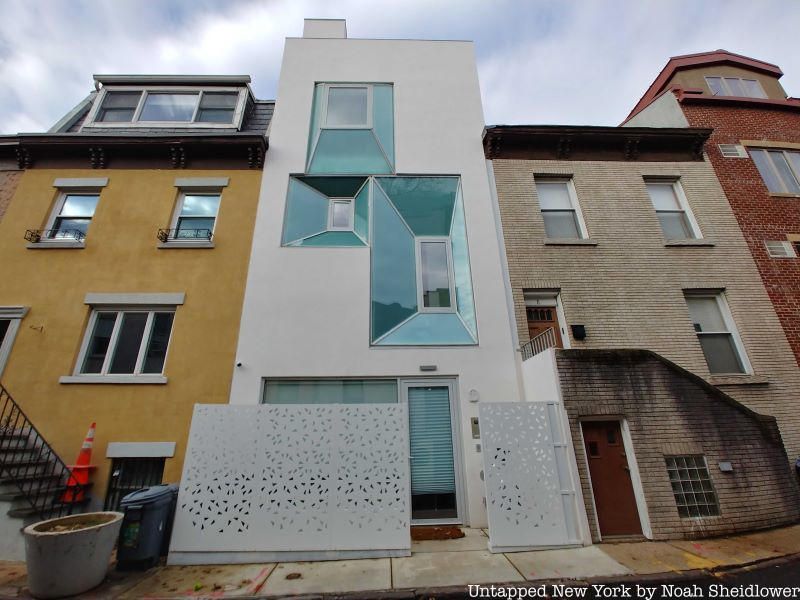
The street is part of a historically Italian-American enclave in Carroll Gardens called “Cat’s Alley.” Some have described the apartments as “Hobbit Homes” because of the doors. 10 Dennett Place is also brand new, painted white with aqua blue windows.
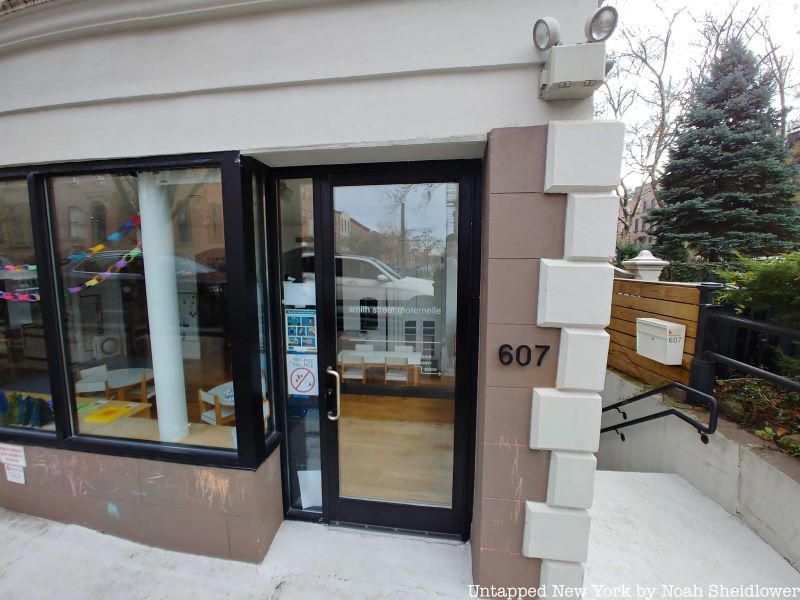
Although Carroll Gardens was mainly settled by Irish in the 1840s and 1850s, many Italian immigrants moved there in the late 19th century, many of whom worked for the Brooklyn Navy Yard. This continued into the 1950s after much of the Irish population moved out, and there was speculation about the presence and role of the mafia in Carroll Gardens. Today, the neighborhood is approximately 20% Italian, and there are a handful of religious and benevolent hometown associations in the area. Carroll Gardens is also known for its Italian restaurants, including pizzeria Lucali, Fragole Ristorante, Gersi, and Frankies 457 Spuntino.
Recently, the neighborhood has seen a wave of immigration from France, especially from upper-middle-class and wealthy French residents. At St. Agnes Church, a Catholic mass is said in French on Sundays. The neighborhood hosts Bastille Day celebrations, and there are numerous dual-language programs for students, including at the International School of Brooklyn. On the north side of Carroll Gardens are a handful of French eateries, including La Cigogne, Le French Tart Deli, and Le Petit Café.
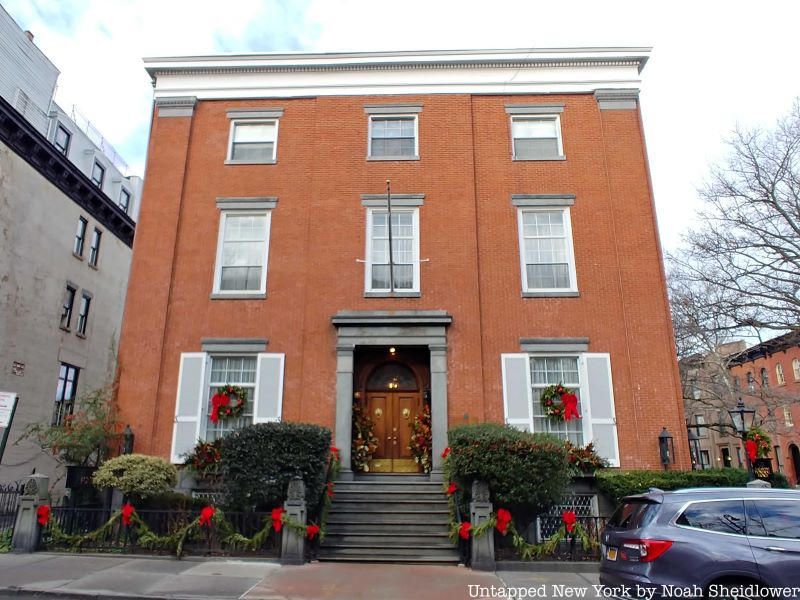
The John Rankin House, one of Carroll Gardens’ only National Register of Historic Preservation sites, is a three-story crimson brick and stone house that stands out from the many brownstones nearby. The Greek Revival-style mansion was completed around 1840 by an unknown architect and belonged to merchant John Rankin. At the time it was built, the home in “rural farm country” was surrounded entirely by farmland, overlooking Upper New York Bay.
In 1996, The Landmarks Preservation Commission described the building as “austere looking” and “imposing in size and impressive in appearance,” later calling it “one of the finest Greek Revival residences in New York City.” The building now houses the F.G. Guido Funeral Home, which purchased the home for $60,000. Victorian mantelpieces, a French walnut staircase, and an 1888 Studebaker carriage are still maintained in the home, as well as many original architectural features.
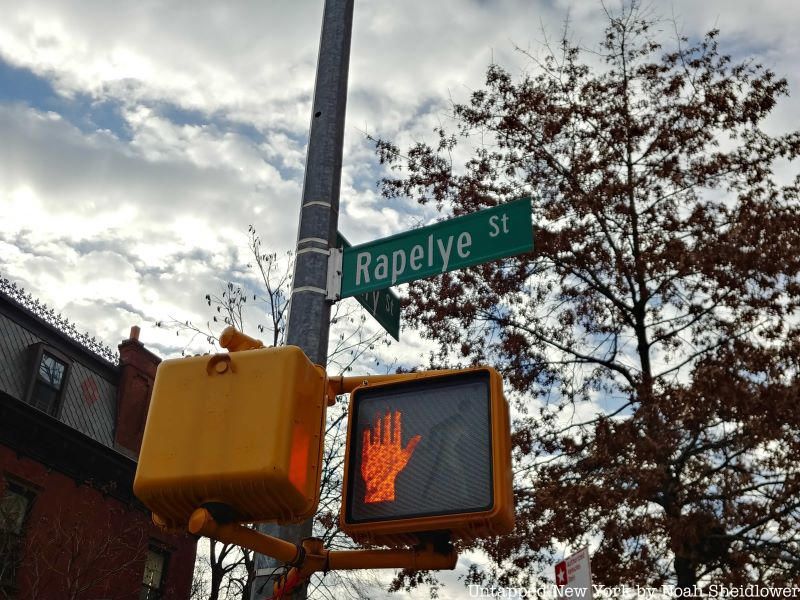
Rapelye Street on the border of Carroll Gardens and Red Hook was named after the family of Sarah Rapelje, the first European child born in New Netherland. Her parents, Joris Jansen Rapelje and Catalina Trico, were among the first Dutch settlers to what would become New York, sailing to America in 1624. The couple helped build Fort Orange near present-day Albany, and one year later they gave birth to Sarah. After two years upstate, the family moved down to New Amsterdam to help build it up. They later moved to the village of Breuckelen, which would become Brooklyn, and eventually to Wallabout Bay.
Dutch authorities actually gifted Sarah a large tract of land in Wallabout for being the first European Christian female born in New Netherland. The family later owned property in Red Hook. Rapelye Street is only two blocks long and is mostly residential, with an entrance to DiMattina Playground.
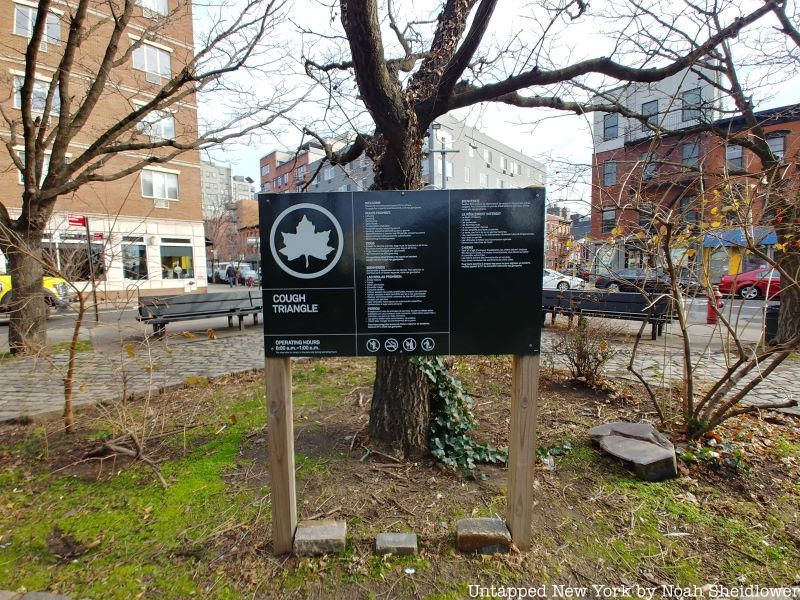
Cough Triangle at the intersection of Court Street and the Brooklyn Queens Expressway/Gowanus Parkway has quite a strange name. While some joke that the triangle takes its name from pollution from the BQE, it is named for the surrounding streets: Court Street provides the C-O-U, Garnet provides the G, and the H comes from Hamilton Avenue.
Cough Triangle is a triangle and plaza within the New York City Parks system, first acquired by the city in 1940. $5,000 was spent on renovation when it was added as a Greenstreets site under Mayor Rudolph Guiliani. Parks Commissioner Henry Stern is credited with coming up with the name. Until a few years ago, remnant rails of a former Court Street trolley line could also be spotted on Garnet Street.
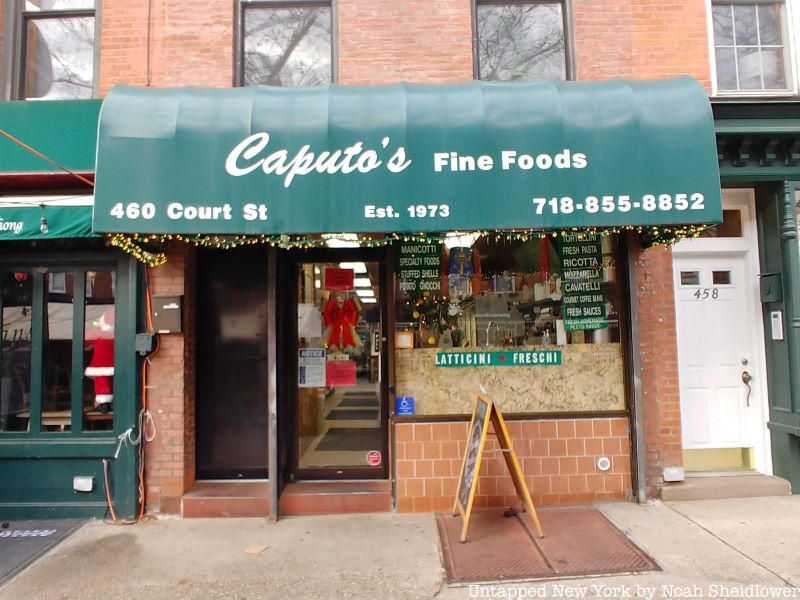
In 1904, the Caputo family opened Caputo’s Bake Shop after settling in the area from Sicily. They originally sold two or three types of bread, and today it’s one of the oldest bakeries in New York City. But seven decades later, an unrelated Caputo family moved to the U.S. and opened Caputo’s Fine Foods just six blocks from the bakery. Caputo’s Fine Foods originally only sold cheeses and canned tomatoes, but they now have specialty goods likes olives, imported olive oil, and cold cuts.
The two Caputo’s have been staples of Carroll Gardens, preserving long-standing Italian culinary traditions. Both maintain an old-school feel while modernizing their menus to appeal to locals.
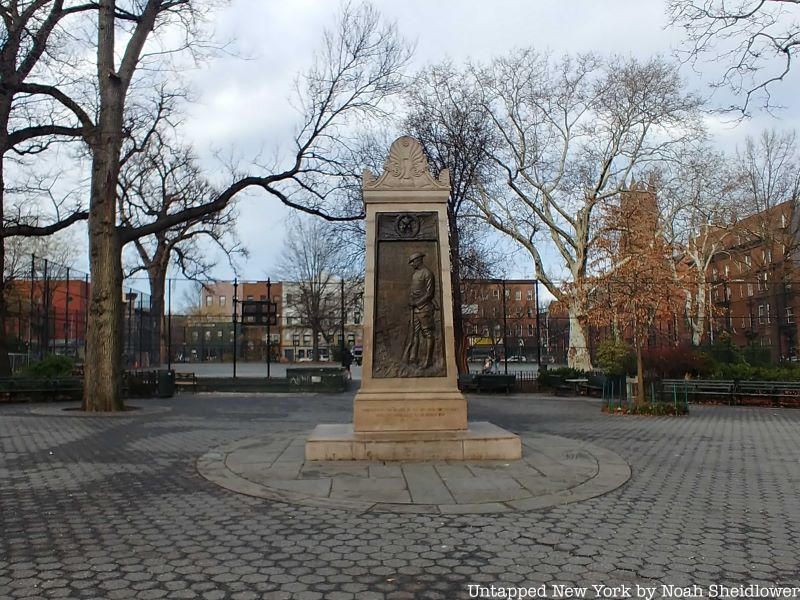
While many know about Central Park’s “Shakespeare in the Park,” Carroll Gardens has its own rendition: Shakespeare in Carroll Park. Each year pre-COVID, Smith Street Stage put on various performances of Shakespeare plays, putting modern twists on 400-year-old classics. Past performances have included Much Ado About Nothing, Romeo & Juliet, Julius Caesar, and Richard III.
In lieu of performances during the pandemic, Smith Street Stage put together a memory collage looking back at the past Carroll Park performances, which would occur right in the center of the park in the open square.
Brooklyn Farmacy & Soda Fountain is located in a restored 1920s apothecary called Longo’s on Henry Street. The apothecary was very successful almost a century ago, but after it closed, the exterior withered away while the interior was frozen in time. The space had architectural details and pharmacy goods preserved, despite dust and clutter. Months of work on restoring the space did not come to fruition until the casting director for the Discovery Channel’s reality TV show Construction Intervention randomly pulled up asking for directions. In just five days, a production crew undertook the restoration of the old pharmacy.
In 2010, after the extremely quick restoration, Brooklyn Farmacy & Soda Fountain opened, filling a void of soda fountain shops mostly absent from New York’s modern culinary scene. The spot serves up classics like egg creams, ice cream floats, and over a dozen sundaes. Milkshakes range from black and white to Rainbow Connection to peanut butter.
Next, check out 15 of NYC’s One Block Streets!
Subscribe to our newsletter